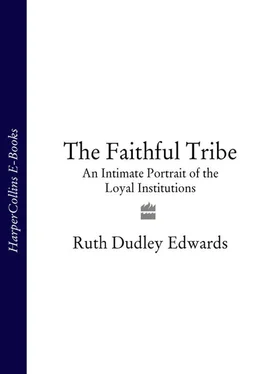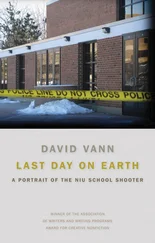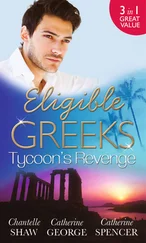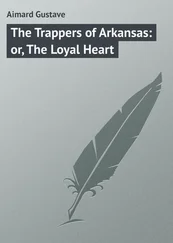Weeks before we headed off with hatchets and ropes to hack down branches and small trees in St Columb’s Park, making sure the ‘look-outs’ were well positioned to follow every move of the park warden, and run the gauntlet in the Limavady Road pulling the biggest load imaginable for our ‘Eleventh’ night bonfire. Doing your watch in the back lane to make sure the boys from Alfred Street, Florence Street, York Street and Bond Street didn’t raid the trees and rubber tyres for their fires.
The ‘Eleventh’ night in King Street was like a fairy tale with singing, dancing and spud roasting in the ashes. There was the usual crate of stout for the men and the navy men from the Sea Eagle Barracks next to King Street, could always be relied upon to bring out the rum and show off women from the area known as ‘Navy Dolls’ hanging onto their arms …
This was my ‘Twelfth’. Collecting for the bonfire, roasting the spuds, the dancing, the singing on the ‘Eleventh’ night in The Fountain. Getting up on the ‘Twelfth’ morning and putting on the kilt, shawl, those damned spats, and the rest of the Craigavon Pipe Band uniform knowing the girls from school would be following the band all day.
The flowers must not be forgotten. Orange lilies and sweet william for the adorning of banners and drums and hats and buttonholes are easily procured in the country, but harder in parts of the city short on gardens. George Chittick recalls: ‘For many many years our district always put Orange lilies on the top of the bannerette. Billy, the secretary of the district, says to me: “George, there’s a man coming down – he’s called Nolan – and he’ll give you a bunch of Orange lilies on the Eleventh night.” So this wee man come down and he said to me: “Is your name Chittick?” I said, “That’s right.” He says, “My name’s Nolan. Here’s a bunch of Orange lilies. Now, when you’re up the Lisburn Road tomorrow morning, you look out for me and I’ll wave at you.” So I went up the road with the lilies on the bannerette and there’s this wee man standing. He smiled at me and I nodded and he said, “Dead on.” So that was all right.
‘Billy says to me. “George, you know that wee man Nolan come down to see you.” I says, “Aye.” “He’s an RC.” “Is that right?” “I work with him and him and me were friends and he always said to me he had a huge set of Orange lilies in his back garden and he’d give some for the bannerette.” “Dead on.” So it went on for a number of years. Up to 1994, Mr Nolan come down every Eleventh night with these flowers and I took them off him and thanked him very much and put them on the bannerette. 1995: I was down that night and no Orange lilies arrived. I thought it was because of Drumcree. I said, “Maybe that’s it. Maybe he doesn’t want to.” But then about two months later on the Lisburn Road this lady comes to me and says, “Is your name Chittick? Are you from Sandy Orange Hall?” I said, “That’s correct.” She says, “Well, I’m Mr Nolan’s daughter and I’m sorry to tell you me father passed away last May.” “Oh, I says, I’m very sorry about that.” She says, “I made an awful blunder. Before he died he said to me: ‘Don’t you forget on the Eleventh night to take the Orange lilies down to Sandy Row’, and,” she says, “I forgot.” And I say, “It’s just one of those things. You can’t do nothing about it. Don’t worry about it.” “No,” she says, “but you’ll never get any more Orange lilies.” I says, “Why?” And she says, “It’s a big house and I had to sell it.” So I says, “I understand that, ma’am. I understand that.” But she says, “I have a wee present for you.” And she brought me out four bulbs. She says, “I rescued them.”
‘So they’re planted in my garden now and they will for ever and ever I hope be the lilies that will be carried on the bannerette.’
The clothes
‘What should I wear to go to an Orange parade?’ I asked my friend Janet, who knows about such things because she was brought up Presbyterian in Cookstown and had an Orange father.
‘Frock,’ she said firmly. ‘No rocks.’
For Orangemen, sartorial decisions are a matter for each lodge. Standards vary dramatically. At the most respectable end, particularly in rural areas, clothes are very important. There are Orangemen who would never have bought a suit if it weren’t for the Twelfth and whose brethren would be horrified if they arrived with a speck of dirt on the white gloves or a dent in their bowlers. And there will be strong views about whether flowers should decorate hats and jackets.
Why bowlers? Because they were a mark of respectability for Orangemen’s fathers and their fathers’ fathers, and in a deeply conservative culture there has to be a very good reason to make any break with tradition. That is tough on those who hate and loathe their bowler hats. There is the occasional middle-aged man who is enhanced by a bowler, but on the whole it is an unflattering article and on some people looks downright ridiculous.
At the other end of the spectrum – most likely to be the Belfast semi-paramilitary world – there are lodges where no one cares what you wear. To my eye, trained as I am in the ways of County Tyrone, T-shirts, tattooed arms and earrings don’t go well with collarettes, but then I would be wary of arguing the point with the kind of people who think they do.
Orangewomen have greater problems. For a start, they can parade only if invited formally by the relevant hosts and if the Women’s Grand Lodge agrees. Northern Irish society, especially in the rural areas, has both the virtues and defects of 1950s Britain. My experience of Orangemen is that in many respects they seem to be admirable husbands, but they mostly expect their wives to be admirable housekeepers at home preparing the sandwiches rather than going on parade.
Olive Whitten, councillor and deputy Grand Mistress of the Association of Loyal Orangewomen of Ireland, has no complaints:
I have no regrets at our members not being invited to take part in the parade. I enjoy standing on the sideline, watching the parade from beginning to end although my one desire always was to have been a playing member of a band.
There are some parading ladies’ lodges, however, who face trickier decisions about clothes than do their brethren. Some turn all the sisters out identically dressed in, for example, purple suits and white hats and shoes, but there are few outfits that suit all women, and the results are usually bad news for some. An alternative approach is to have an agreed colour but allow different styles. One lodge produced a enormous collection of different white hats. Others adopt a more laissez-faire approach, but still require suits and hats and gloves. And the most bohemian let their members wear what they like, secure in the knowledge that they will be properly turned-out in their best Sunday attire.
The regalia
When it comes to regalia, there are clear rules. Ordinary members of private lodges of Orange Degree only are entitled to wear an Orange sash or usually a collar (nowadays called a collarette, though many Orangemen still call it a sash) about four inches wide, with the lodge number displayed in front; a few lodges wear blue for historical reasons everyone seems to have forgotten. Having the Purple Degree requires the wearing of a sash or collarette about four and a half inches wide with a purple stripe. Members of the Royal Arch Purple have the colours reversed: purple with orange edging. Blackmen wear their Orange regalia when they parade on the Twelfth. On Royal Black Preceptory parades they wear black collarettes which may have several coloured stripes representing various of their ten degrees and presenting the symbolic connotations of a rainbow; they also wear masonic-style blue, fringed aprons and embroidered cuffs. The Apprentice Boys wear crimson sashes or collarettes to represent the blood spilt by the defenders during the Siege of Derry and the defiant flag flown from the cathedral tower.
Читать дальше












